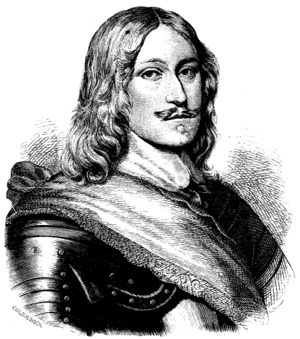Lord High Treasurer of Sweden facts for kids
The Lord High Treasurer (in Swedish, riksskattmästare) was a very important person in the Swedish government a long time ago. This role existed between 1602 and 1684. The Lord High Treasurer was in charge of the Kammarkollegiet, which was like the country's finance department. From 1634, this person was one of the five "Great Officers of the Realm". These officers were the most powerful people in the government, right after the king.
Contents
How the Role Began
The idea of someone managing the state's money started very early. As far back as the 1300s, there was a "Master of the Chamber" (kammarmästare). This person was responsible for the country's finances.
During the time of King Gustav Vasa (1523–1560), this role was also called the "chief accountant" (överste räknemästare). This chief accountant was the head of the "chamber" (kammaren). This chamber was Sweden's first central government office. Later in the 1500s, the chief accountant was one of the king's special advisors. In 1602, the head of the chamber officially became known as the Lord High Treasurer, or riksskattmästare.
The Treasurer's Role in the 1600s
In the early 1600s, the chamber was reorganized. It was renamed Kammarkollegiet. From 1634, this department became one of the five main branches of the government. The Lord High Treasurer, as the head of the Kammarkollegiet, was the fifth highest-ranking official among the five Great Officers of the Realm.
This meant the Lord High Treasurer was not only a top advisor to the king. They were also a key member of the group that ruled Sweden. This was especially true when a king or queen was too young to rule on their own.

The first Lord High Treasurer of Sweden was Seved Ribbing. He held the position from 1602 to 1613. After him, Jesper Mattsson Krus took over. However, when Krus left the role in 1622, no new treasurer was officially appointed until 1634. During this time, Count Palatine John Casimir acted as if he were the Lord High Treasurer, even without the official title.
When King Charles X Gustav died in 1660, he wanted Herman Fleming to become the new Lord High Treasurer. This would have made Fleming part of the group ruling Sweden while young King Charles XI grew up. However, the powerful noble families disagreed. They made sure Fleming did not get the job. Instead, Gustaf Bonde became the new treasurer.
The End of the Title
After Sten Bielke died in 1684, King Charles XI decided to get rid of the title. King Charles XI had become old enough to rule by himself in 1672. He generally preferred not to appoint new people to these high offices when they became empty. He wanted more direct control over the government.
The riksskattmästare title has not been used since then. However, King Charles XI also abolished two other important offices, the Lord High Chancellor of Sweden and the Lord High Steward of Sweden. These two titles were brought back for a short time in the late 1700s. The duties of the Lord High Treasurer were taken over by the President of the Kammarkollegium.
Lord High Treasurers of Sweden
- Seved Ribbing (1602–1613)
- Jesper Mattsson Krus (1615–1622)
- Gabriel Bengtsson Oxenstierna (1634–1652)
- Magnus Gabriel De la Gardie (1652–1660)
- Gustaf Bonde (1660–1667)
- Seved Bååt (1668–1669)
- Sten Bielke (1672–1684)

